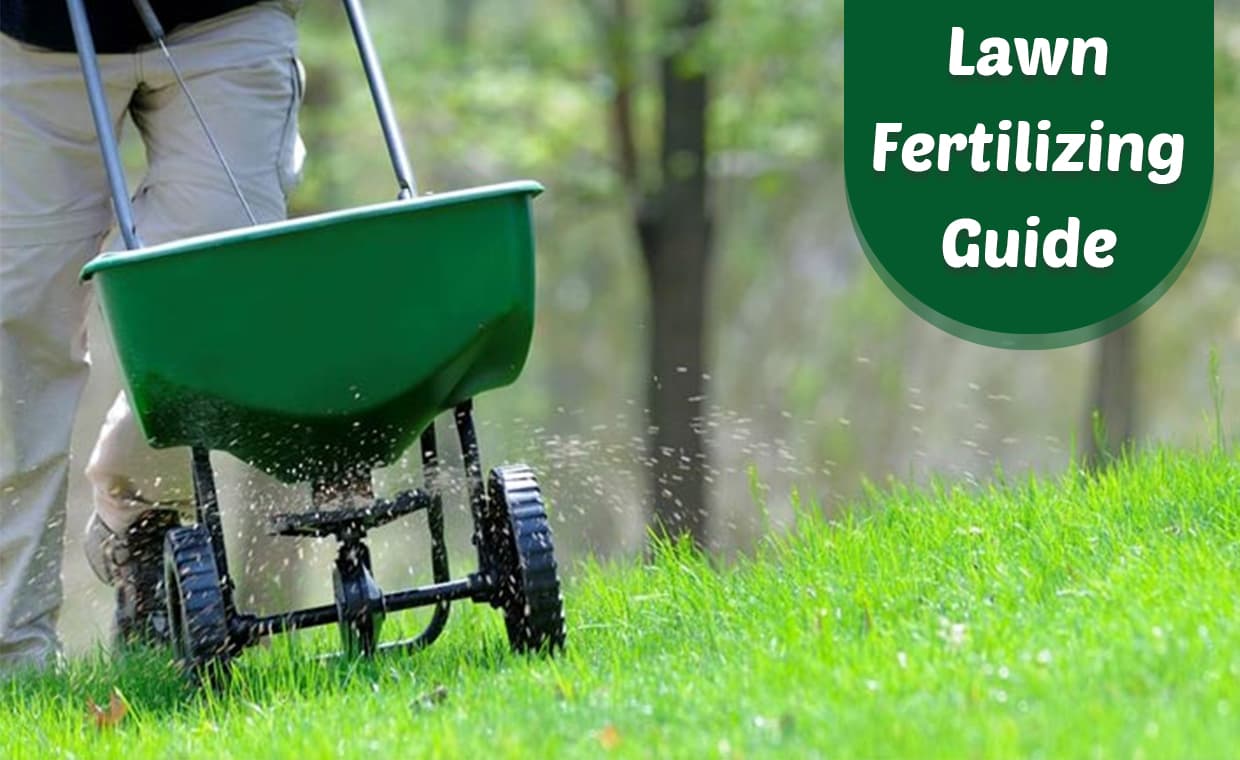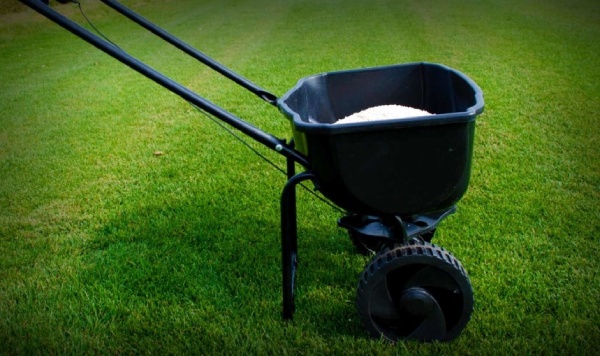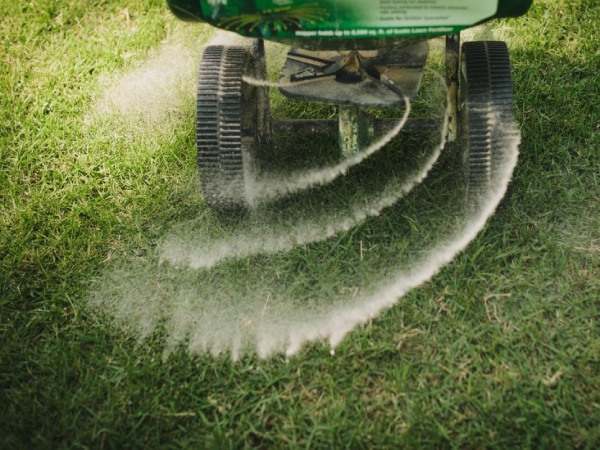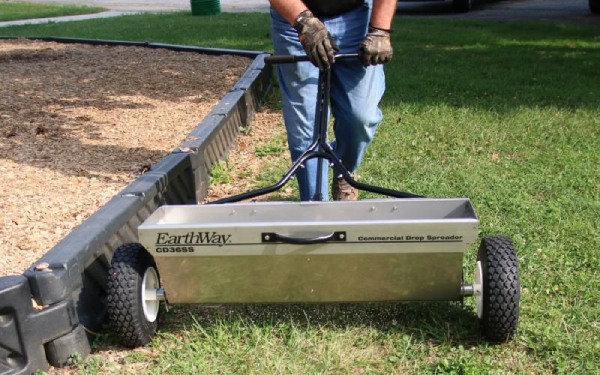
Having green, lush grass is the first step to ensuring that your garden keeps thriving for a long time. Apart from other things, fertilizing is a key aspect in the process of keeping grass healthy. However, lawn fertilization is neither easy nor something that can be ignored. It is believed that the ideal time for lawn fertilization is in spring because that is when the temperature is at its optimum level.
Lawn Fertilizing Guide
As they say, “A beautiful lawn doesn’t just happen by itself.” Read on to find out what you will need and how you can go about fertilizing your lawn.
01. Crucial Timing for Lawn Fertilization

The timing of fertilization is very crucial for your lawn. Fertilization is not a process you can undertake at any time you feel is convenient. In the USA or Northern Hemisphere, the ideal time for lawn fertilization is in the spring when the temperature is in the range of around 55 degrees Fahrenheit. However, globally, the timing for lawn fertilizing would depend on the type of grass you have planted. Ideally in any setup, this should be the time when flowers start blooming and grass also shows signs of growing. For most locations, this would be during the end of February or the beginning of March in Northern Hemisphere. It would be different in Southern Hemisphere.
02. Composition of Fertilize
It is important that you check the label on the fertilizer bags before starting the fertilization process. Normally, on any bag, the composition of nitrogen, phosphate, and potassium is clearly mentioned. A fertilizer bag which mentions 20-5-10 would have 20% nitrogen, 5% phosphate and 10% potassium, in that order. The rest of the material comprises filler stuff. This is the composition you should be looking for when you start your lawn fertilization.
03. Slow-Release Fertilizer

A slow-release fertilizer breaks down slowly, so it takes some time before the next application is due. Look for a slow-release fertilizer with nitrogen in moderate amounts. If you use a fertilizer with excessive nitrogen, it would lead to the grass growing very fast, which is not an ideal situation. In normal cases, you would need one-tenth of a pound of nitrogen per week for things to move smoothly.
04. Planning Five Applications
You have to ensure that you fertilize your lawn at least five times. The first fertilizer application should be in the spring when temperatures are hovering around 55 degrees Fahrenheit. For countries where the temperatures in spring are higher, the schedule can be delayed or started early as per the requirements. The second application should be approximately four weeks after the first one. After that, you can continue fertilizing your lawn every 5-6 weeks till October comes.
For the third application, you must use manure instead of a normal fertilizer. Do not forget to fertilize in the autumn as well, because grass shows a decent amount of growth in that season too. Your carelessness may stop its prospects of growing further and even thin it out. However, when you apply fertilizer, make sure it is one which is rich in phosphorus and potassium as that brings about better root growth.
05. Watering

After the use of fertilizer, the grass shows signs of growth and to facilitate it further, watering is required. In fact, the more you water, the better the growth and the more fertilizer is needed in the next application. If you have an automatic sprinkler in your garden, then the application of fertilizer should be done once every six weeks. However, in the absence of one, you must give a further two-week break in addition. Also, it is necessary that you read the instructions mentioned on the fertilizer bags regarding watering. Granulated fertilizers need water in order to break down completely, whereas there are other fertilizers which need watering post-application.
06. Filling the Spreader


Moving on to the actual process of lawn fertilization, you first need a spreader to do so effectively. Make sure that when you are putting the fertilizer inside the spreader, it is parked at a location where there is no grass. You do not want an excess of fertilizer dropping down and spoiling the grass beneath. Before filling the spreader, you must also ensure that the hopper is closed; else all the fertilizer will fall on the ground.
Usually, a broadcast spreader is considered to be a better bet than a drop spreader. This is probably because they are easy to use and can disperse the fertilizer over a larger distance. In case your garden is not very big, you can also use a handheld broadcast spreader. This would be considerably cheaper and you would be able to handle the work just as, if not more, efficiently.
07. Broadcast Spreader

Whichever spreader type you chose, make sure that you are walking at a slow pace when fertilizing the grass. An inconsistent walking pace means that your fertilizer would fall unevenly and hence, the result would not meet your expectations.
08. Application
It is important that you moderate the amount of fertilizer you are spreading. Most fertilizer bags mention how much fertilizer you need to apply, but experts suggest that you may ignore these instructions. For the best results, spread the granules at half or less than half the rate mentioned on the fertilizer bags.
First, apply the fertilizer across the perimeter of the yard. Then, slowly move towards the middle, all this while moving in one direction only. You may go for less quantity rather than overfilling the spreader. Overuse can burn your grass, hence try and avoid that completely.
Before starting the process, do make sure you have checked the weather forecast. If there is to be heavy rain just after your application, then most of the fertilizer would wash off with the rainwater. This would waste all your time and effort, something no one wants.
09. Sweep Up Stray Granules
After the entire process, remove any stray granules that have fallen down. Instead of letting it get washed away on its own, sweep it up and collect it. More than anything, this step is crucial to avoid water pollution as the fertilizer can be washed off into rivers and other water bodies in case it rains.
Conclusion
Fertilizing your lawn is a must to ensure that the grass grows healthy and shiny. To ensure the best results, you must follow the aforementioned steps. With regular applications, you will gradually understand the appropriate amount and even the best way of fertilizer application. Under no circumstance should you over apply or reduce the gap between two applications. Fertilizer is good for your lawn, but too much of it can be dangerous and it is best to keep this in mind.
Image Courtesy: Image 1, Image 2, Image 3
Author Bio
Garima Bais – I am a blogger writing on topics like parenting, love, life, beauty and travel. Belonging to a country with a deep heritage India I am an eternal optimist and believe that whatever life gives to you should be taken with gratitude. Do let me know your take on my articles in the form of comments.


































